Inka Prophecy The End Of Time -- Alberto Villoldo, Ph.D.
Submitted by will on Wed, 03/14/2007 - 3:38pm
http://www.wovoca.com/prophecy-inka-end-of-time.htm |
The Inka Prophecy of the End of Time Alberto Villoldo, Ph.D. |
| Story
"You have to bring the blindfold down over his eyes before you mount," the Indian explained in a mixture of Spanish and Qechua. "He spooks easy." I stared at my horse, barely larger than a pony, and the bandanna that covered his eyes. "He's a good horse," he went on, noticing my hesitation. "Small, but good. Big horses, their hearts give out at this altitude." |
Synopsis
Q. What did they say about the US?
|
"We've lived in the mountains since the beginning of time," don Mariano explained. “After the Naupa Runa, the pre-worldly beings, were banished by the Children of the Sun, our ancestors settled in the mountaintops. We've always lived with the Apus, the sacred mountains." When I asked don Humberto why they came down from the mountains, he said that it has been foretold in their prophecies. For five hundred years they have watched the working of the Conquistadors - the polluting of the rivers, the growth of the cities, the changing weather systems, and then the signs began to appear. They had been entrusted with a Prophecy that announced the End of Time. "Anyone can be a soothsayer," don Humberto explained. "We have been the keepers of a body of processes, of rites of passage, that usher in who we are evolving into as a planet. These processes are not only for the Indians, but also for the world."
 I asked don Humberto to elaborate, to tell me what these signs and these processes were. "Our Prophecy is written in stone," he said. "We have no written language, like you do. We have only our weavings and our stones. If you understand Machu Picchu, and the stones at that ancient city," he went on, "you understand Cuzco. Machu Picchu is a miniature of Cuzco. If you understand Cuzco, you understand the Inka Empire." At that point he paused, and I seized the opportunity to lean against a large boulder to catch my breath. Don Mariano squatted down next to me an opened his mesa, the collection power objects that every shaman carries. "If you understand the mesa," he said as he carefully opened up his medicine bundle to reveal the stones inside it, "you understand Machu Picchu and the Prophecy."
I asked don Humberto to elaborate, to tell me what these signs and these processes were. "Our Prophecy is written in stone," he said. "We have no written language, like you do. We have only our weavings and our stones. If you understand Machu Picchu, and the stones at that ancient city," he went on, "you understand Cuzco. Machu Picchu is a miniature of Cuzco. If you understand Cuzco, you understand the Inka Empire." At that point he paused, and I seized the opportunity to lean against a large boulder to catch my breath. Don Mariano squatted down next to me an opened his mesa, the collection power objects that every shaman carries. "If you understand the mesa," he said as he carefully opened up his medicine bundle to reveal the stones inside it, "you understand Machu Picchu and the Prophecy."
Machu Picchu was built by Pachacutek, the ninth Inka. His name means the 'transformer of the Earth.' He was the architect of cities in the clouds. His name and his person embody the essence of the Prophecy. The word Pacha in the language of the Inka means Earth, or Time. Kuti means to turn upside down, or to set things right. The Prophecy of the return of Pachacutek, the man-god, herald the end of time. Pachakuti, on the other hand, refers to a process. The last Pachakuti happened with the arrival of the Spanish Conquistadors. Throughout the Americas, the world of the Indian was turned upside down. Kings and chiefs were subjugated and turned into slaves, and barbarians became rulers. Medicine people were tortured in the mines and fields. Order in the Americas was replaced with chaos. And with the coming of the European religion, the children of the earth were cast out of the Garden.
 The next Pachakuti has already begun, and the upheaval and chaos characteristic of this period will last until the year 2012. At that time the world will be turned right side up again. The pillars of European civilization will collapse, and the ways of the Earth Peoples will return. The Conquistador will perish by his own hand and his own blade. For the Inka this next Pachakuti holds the possibility of chaos and the end of the world as we know it. But it also promises the emergence of a new kind of human at the end of this period of turmoil.
The next Pachakuti has already begun, and the upheaval and chaos characteristic of this period will last until the year 2012. At that time the world will be turned right side up again. The pillars of European civilization will collapse, and the ways of the Earth Peoples will return. The Conquistador will perish by his own hand and his own blade. For the Inka this next Pachakuti holds the possibility of chaos and the end of the world as we know it. But it also promises the emergence of a new kind of human at the end of this period of turmoil.
Like the Hopi, the Inka were given signs that would announce the coming of the Pachakuti. These signs included the drying of the high mountain lagoons, the near extinction of the condor, and the wrath of our father the sun (the Q'ero live at 17,000 feet at the edge of the tear in the ozone layer.) Like the Hopi, who were told about the period of Koyanasquatsi, or ensuing chaos, the Inka were foretold about the upheaval coming to the planet. It is these signs that led them to first come down from their mountaintops to reveal the rites of passage.
Shamanism is not a religion, yet it is the basis of all religions. The Andean shamans, the pacos, explain that they have no Christ, no Buddha, and no Moses that says, "Follow my footsteps." The pacos say "Follow your own footsteps. Learn from the rivers, the trees and the rocks. Honor the Christ, the Buddha, and your brothers and sisters. Honor the Pachamama (the Earth) and the Great Spirit. Honor yourself and all of creation." None- the less, the theme of stepping beyond time that the Inka speak of can be found in every religious tradition. In Judaism, the Messiah will come at the end of time. When Christ came, time ended and a new time began (BC and AD.)

Don Mariano put away his mesa. "Haku, Wayakay," he said, "We must hurry." The sun was close to setting, and we were still a good hour away from camp. Then he pointed up to the Apus. A ring of blue sky encircled the mountain. By the time we arrived at base camp the sky was clear.
For several days now each one of us had carried a stone that symbolized our death. I thought about how death grows and festers within us, and claims us little by little, until it consumes all of our life force. As soon as we reached camp we hiked to Otorongo Cocha, the Jaguar lagoon. We tossed our stones into the deep blue pool, symbolically shedding the death that has been selected for us by our culture, by ourselves, and by the moment in history we live.
Death is a predator that stalks us all. In my years of living and studying the medicine ways of the Inka I have come to understand that the animistic thinking of shamanism is far from primitive. To the contrary, it is complex and elegant. To the shaman, for example, there is no difference between being killed by a jaguar or by a microbe. For us one is a disease, and the other an unfortunate accident. It is essential to be in good relationship to both the microbes and jaguars. When you are not in proper relationship, death begins to stalk you. I believe that most of us have already chosen how we are going to die, in the same way that we have chosen how we are going to live. Don Humberto, the chief of the Q'ero nation, later said to me that in order to shed the life that had been selected for us, we first had to shed the death that had been selected for us.
More important, in the Jaguar Lagoon we shed our relationship with temporal life. As the ‘end of time’ is already upon us we must learn to engage non-causal relationships with life. Most of us are irreparably bound to ordinary time and causality, to cause and effect. We define who we were today by an event that happened to us twenty years or twenty minutes earlier. Who we are today is the effect of an earlier cause. At this time in history we need to learn to define ourselves in terms of who we are becoming, not only whom we have been. When we transcend our ordinary relationships with time, we can influence destiny.

On my way back to camp I spotted Diablo, my blindfolded horse. The sun was just setting, and the snow capped tip of the mountain seemed on fire. I walked up and untied the bandanna that covered his eyes. He looked at me squinting, blinded by the Andean sun, and bolted away.
The Star Rites are held at the Snow Star, at Mt. Ausangate. They are believed to summon the return of the Inka. Before Spanish rule, the Inka were the political and spiritual leaders of a mighty empire that spanned a large part of South America. But the shamans are not speaking about the return of a ruler that will re-establish the now-forgotten glory of the empire. They speak of the possibility of Luminous Ones emerging among us.
The processes the Inka shamans have been the keepers of are known as Karpay, the great rites of passage. The Karpay connect the person to an ancient lineage of knowledge and power that cannot be accessed individually - it can only be summoned as a village. This power can ultimately provide the fuel for an individual to leap into the body of an Inka, a luminous one, someone who is directly connected to the source that fuels stars. A person who completes the cycle of ceremony of the Karpay is able to emerge into the fifth Sun, similar to the Hopi prophecies of emerging into the fifth world. They can become the Luminous One, also known as ‘Man (or Woman) who walks in Peace.’
 The Karpay starts with a despacho. The despacho is a ceremony central to all Andean shamanism, and the word literally means a 'give away' or 'offering' prepared with the fruits of the Earth - seeds of corn, quinoa and the coca plant.
The Karpay starts with a despacho. The despacho is a ceremony central to all Andean shamanism, and the word literally means a 'give away' or 'offering' prepared with the fruits of the Earth - seeds of corn, quinoa and the coca plant.
When the offerings that go into the despacho are complete, the shamans 'cleanse' us with the medicine bundles they had prepared. This would extract any huchas, or heavy energies associated with our past - the pain, grief and discontent that we all carry from our personal histories, as well as the violence we carry within us. After the cleansing, we received a ritual transmission of the Inka lineage. By evening time, as the ceremony was coming to an end, they explained that the seeds of an Inka had been planted in us. It was up to each of us now to grow these seeds.
The Inka believe that the doorways between the worlds are opening - holes in time that we can step through and beyond, where we can explore our nascent human capabilities. We can craft new physical bodies that age differently, that heal differently, and that die differently. We can create a world where our children live in peace. We can bring balance and beauty to the Earth.


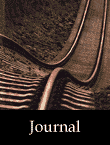
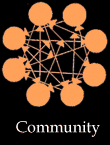
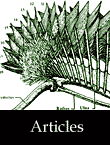








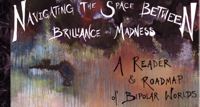


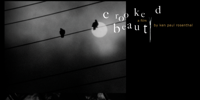


The New Age stew
Always amazes me that no matter who the middle class whites steal from, they make them all say the same thing.
I guess New Agers steal what suits them, and distort the rest.
A new form of imperialism and European conquest. You've stolen their land. Now steal their religion and twist it to your own ends.